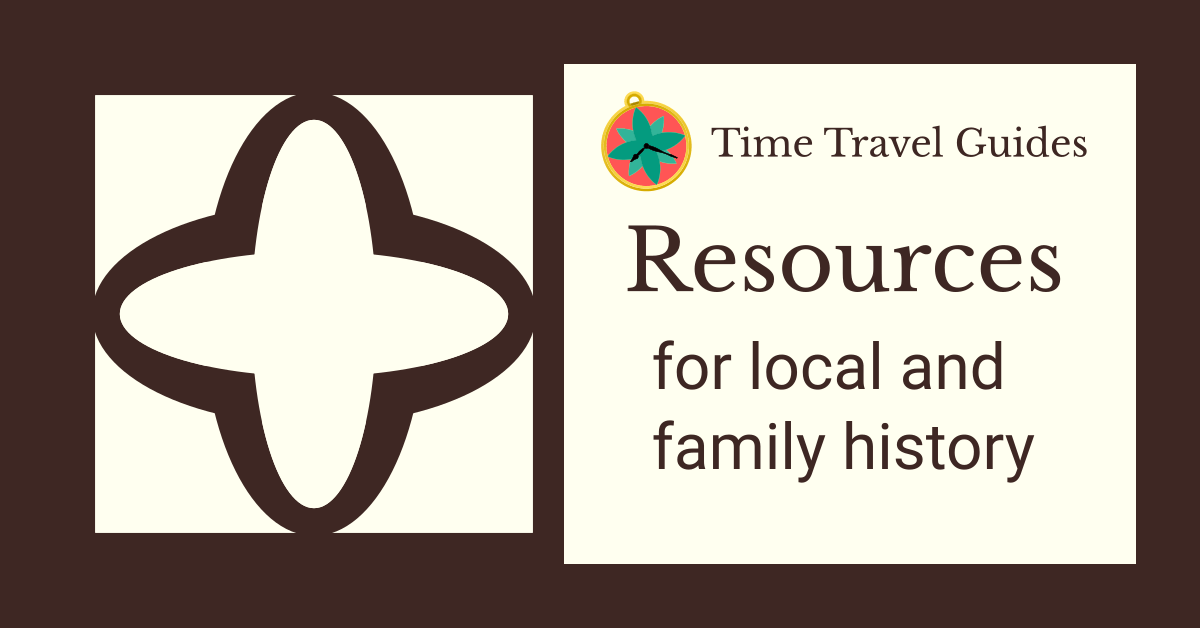Using the National Library of Wales for Local and Family History Research
The National Library of Wales (Llyfrgell Genedlaethol Cymru) is a legal deposit library, which means that it holds copies of everything published in the UK and Ireland, but it also has a large archive with many different types of material.
How to Access
The National Library of Wales (NLW) has a searchable online catalogue. You can limit the search to certain types of materials, digitised items, or by date or language. The Advanced Search options can help you to further narrow down your results.
Many documents have been digitised so they can be viewed online. Good quality images of these documents are free to view, but you will need to pay if you want to download a copy to keep. If the documents you need haven’t been digitised, then you may be able to order a copy (for a fee) or see them in person at the library.
What Material is Available?
The NLW has all kinds of publications, including many books, journals, and newspapers that can contain useful historical information. The archives are the main resource for local and family history as they contain wills, marriage bonds, tithe maps, court records, and many other documents connected to Welsh history. Many of the most useful documents have been digitised and made available online for free, including the wills, marriage bonds, and tithe maps for Wales.
The NLW collection focuses on records from Wales, but as with other archives there are also some documents that relate to nearby areas such as Shropshire. The NLW collection is listed on the National Archives Discovery catalogue, so this can help you to identify records related to other areas that are held in Wales.
When to Use the National Library of Wales
The NLW archives will be most useful if you are researching local history in Wales or you have ancestors with Welsh connections. Some neighbouring areas such as Shropshire are also mentioned in the archives.
Many documents held by the NLW are also available through genealogy sites, including parish registers. The digitised wills are also available on Ancestry (with a subscription), but you can see them on the NLW website for free. However, there is a £5 charge to download a will from the NLW, so it can be cheaper to pay for an Ancestry subscription if you need to download many documents.
Tips on Using the National Library of Wales
1. Welsh Names
The traditional patrynomic system was used quite widely in Wales until relatively recently. Although fixed surnames started to become more common from around the 15th century, the NLW archives still has documents using patrynomic names from the 18th and 19th centuries. The further back in time you go, the more likely you are to encounter patrynomic names.
In a patrynomic system, people take their names from their father’s first name. Each generation therefore takes its own name, instead of sharing a surname with all their direct male ancestors.
- In Welsh archives, the first name and father’s name are usually connected by ap or ab, which means son: Iwan ap Dafydd (Iwan, son of Dafydd).
- Women also used the patrynomic system, but the connecting term was ferch or daughter: Mari ferch Dafydd (Mari, daughter of Dafydd).
- A matronymic version, using the mother’s name, was also used ocasionally: Evan ab Mari (Evan, son of Mari).
- More generations could also be added at the end of the name: Evan ab Mari ferch Dafydd (Evan, son of Mari the daughter of Dafydd). You could recite an entire line of your ancestors in this form.
Many Welsh surnames derive from these patrynomic names. Some took the p from the end of ap and added it to the forename (Probert from ap Robert) while others added an s to the end of the forename (Jones from Jon).
Patrynomic names can make it harder to identify individuals and understand the relationships between them as more people were using the same names in the same areas. As people moved from the patrynomic system to surnames, some individuals used both types of name. The same person might give a surname in one situation, but then use a patrynomic name on another document. You may need to search for both versions to find all the relevant documents.
2. Welsh Place Names
The first point to be aware of when searching for locations in the NLW catalogue is that many places (even outside of Wales) have both Welsh and English names. For example, the Welsh name for Shrewsbury is Yr Amwythig. Documents in the archive might use either name, so it is necessary to search for both.
The other issue is that Welsh place names are particularly likely to be misspelled in old documents. Although different spellings are often used for English place names too, it is more common in Wales because a lot of the documents were written by English speakers. For example, place names ending in the Welsh cwm (valley) were sometimes recorded as comb or combe. Trying alternative spellings and using wildcards can reveal more documents.
Some alternative spellings are predictable because they are the result of mutation. In Welsh, the first consonant in a word changes or mutates under certain conditions. For example, the town of Bangor will sometimes be referred to as Fangor, so you will need to search for both options.


